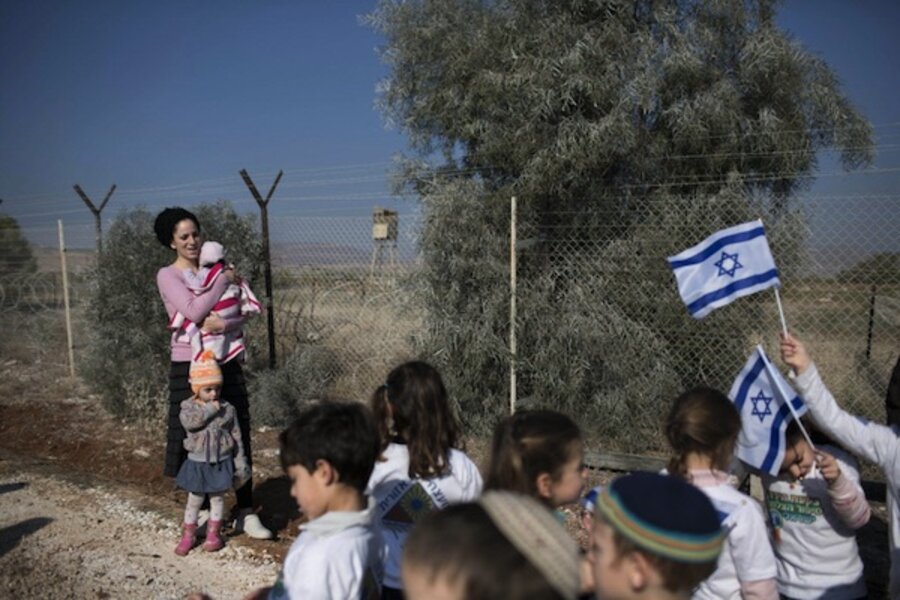Few Israelis, Palestinians see two-state solution as feasible. What’s the alternative?
Loading...
| Jerusalem
Secretary of State John Kerry may take comfort in the fact that roughly half of Israelis and Palestinians are confident that their side is interested in a two-state solution and about 40 percent are willing to let him work at it. But only about 1 in 3 believe that such a solution is feasible, a new Zogby poll reveals.
It's not hard to see why. Since the 1993 Oslo Accords, the population of Israeli settlements in the West Bank has tripled, making dismantlement or evacuation of many of them much more difficult, if not impossible. On the Palestinian side, a deep rift exists between the Hamas-run Gaza Strip and the Fatah-dominated West Bank. In addition, political upheavals in the Arab world since 2011 have turned Arab leaders’ attention inwards and away from the Palestinian cause.
Amid these changing dynamics, alternative visions for the Israeli-Palestinian conflict are under discussion by scholars, politicians, and activists. Some would not be palatable to political elites on either or both sides of the divide. But neither is the current impasse, according to the polling data.
Here are a few of the alternatives:
One binational state: Historic Palestine, including Israel, the West Bank, and potentially the Gaza Strip, becomes a binational state with equal rights for all. This is increasingly popular among Palestinians, who would likely become the majority within a few decades as a results of higher average birth rates. But it would challenge Israel’s identity as Jewish and democratic, because one of those criteria would have to be sacrificed to maintain the other, given the demographic trend.
Israeli annexation of West Bank settlements: Naftali Bennett, the Minister of Economy and a former settler leader, has proposed annexing Area C of the West Bank. The area, which comprises 60 percent of the West Bank, includes approximately 350,000 Israeli settlers as well as 50,000 Palestinians.
In many ways, Area C is already treated as part of Israel: Israeli phone companies provide wireless coverage and connectivity with Israel proper; Israeli car insurance (otherwise useless in the West Bank) applies there; Israeli bus lines and electric lines service the settlements; and education, construction, and environmental policies in the settlements are regulated by the Israeli government.
Bennett has called for granting full Israeli citizenship to Palestinians in the area to defuse international accusations of an apartheid state. But for Palestinians, who have already lost 78 percent of historic Palestine to Israel, losing nearly two-thirds of the remaining 22 percent is a non-starter.
Baby steps: Israel loosens its restrictions on Palestinian freedom of movement, many of which were put in place after the intifada. This allows Israelis and Palestinians to gradually get to know each other again. Palestinians would be allowed to visit the beach, while Israelis would be free to shop in Palestinian cities like Bethlehem, Ramallah, and Nablus. Peace would be built from the ground up through people-to-people interactions, rather than decided by negotiators.
Status quo: Israel and the Palestinian Authority maintain their current positions, unwilling or unable to bridge the divide between them. Israel addresses security threats with its superior military and intelligence capabilities, and maintains its system of checkpoints and permits for Palestinians, limiting their freedom of movement and commerce.
Fresh conflict: The lack of a peace deal sparks a third intifada. While there has been an uptick in terrorist incidents and clashes between Palestinians and settlers in recent months, few see a third intifada as imminent, though it remains a risk.





